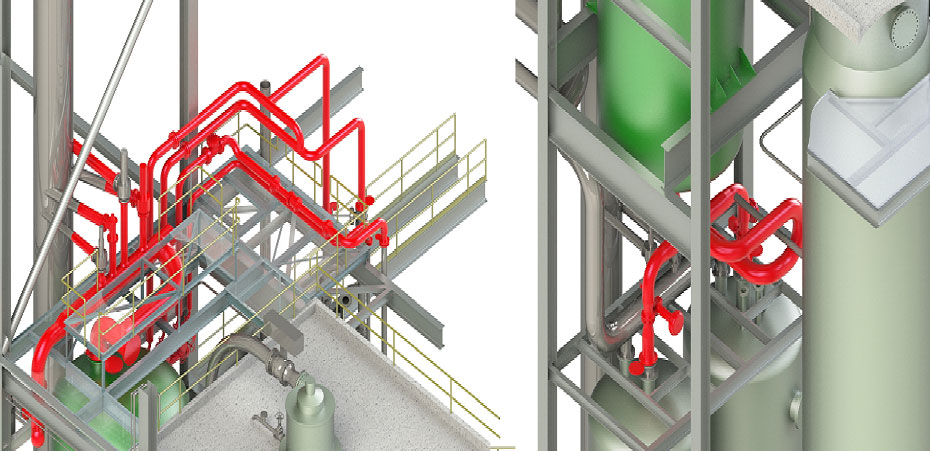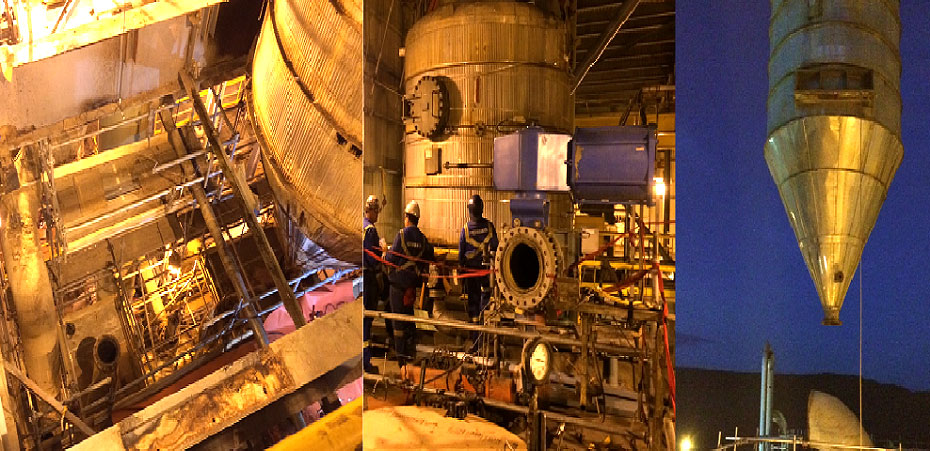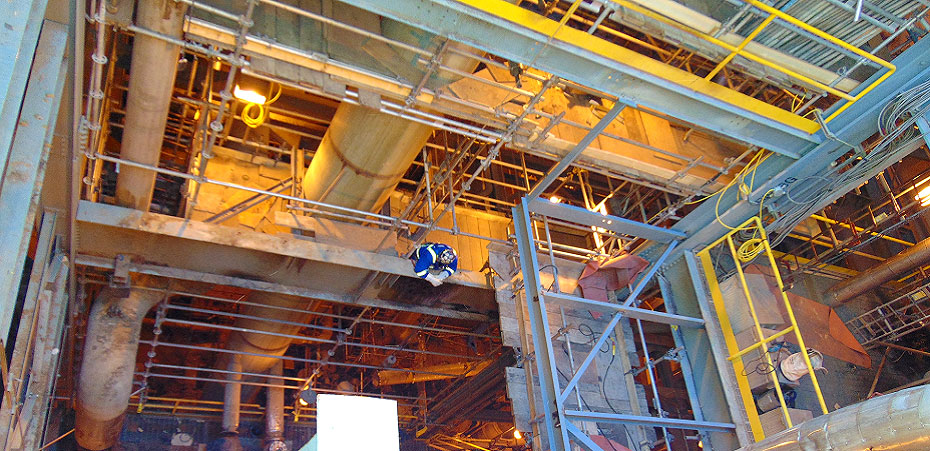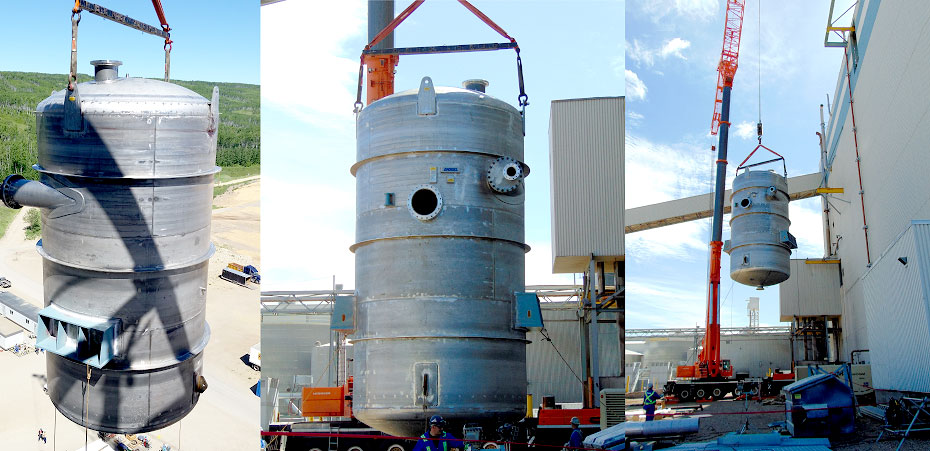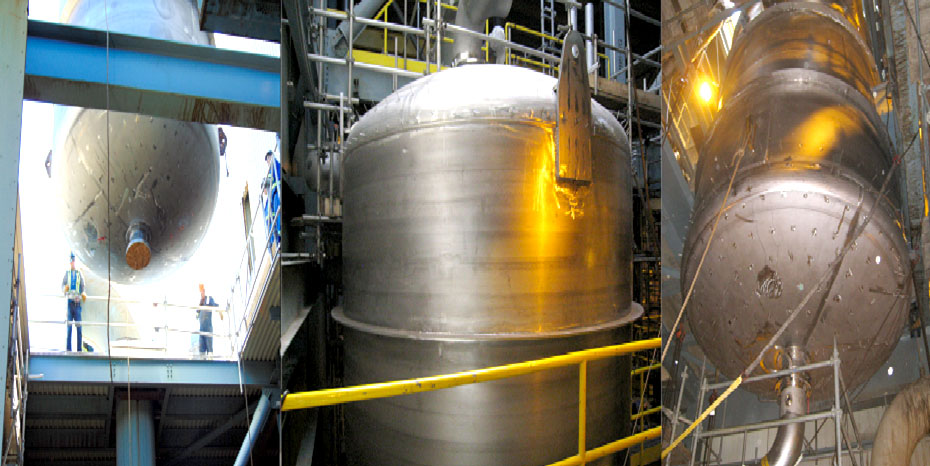How to replace corroded tanks within the confines of an existing plant.
Daishowa-Marubeni International (DMI) owns and operates the Peace River Pulp Division (PRPD) mill, located in Peace River, Alberta. PRPD produces premium hardwood (aspen) and softwood fully bleached kraft pulp in campaigns. Hot liquor from the Kamyr continuous cook digester passes through a 2-stage flash process, producing steam at a pressure usable elsewhere in the process. Increased softwood production rates have resulted in extensive corrosion of two of the existing carbon steel Flash Tanks. The tanks were replaced with one larger Duplex stainless tank.
BUSINESS PROBLEM SOLVED
While increased softwood production rates have been a financial benefit, the resulting increased rate of corrosion of the Flash Tanks has resulted in extensive routine weld metal buildup and repairs to maintain the required tank wall thickness to safely remain in service between plant shutdowns. One new tank was proposed to replace two existing parallel Flash Tanks in order to eliminate the increasing repair costs as well as shutdown resources required.
TECHNICAL PROBLEM SOLVED
The new tank was comprised of Duplex stainless steel to significantly reduce the risk of future corrosion. Also, the new tank design allowed for an increase in capacity and reduced liquor carryover which permitted one new tank to replace the existing two tanks, with dimensions only slightly larger than each original tank.
Lowering the new 4.5-meter diameter, 9-meter-long tank into an existing building posed challenges regarding interference with existing building steel, and designing nozzle orientations that would not impede the installation and also would best tie into the existing piping while considering optimal fluid flow patterns.
The safety relief valve venting capacity review indicated a shortfall, thus the design included upgrades to the SRVs in order to conform to the latest ASME Section VIII requirements.
WHAT WE DID
Many of Temec’s efforts helped to contribute to a successful project, including development of a phased steel installation strategy to best the minimize construction costs of the extensive steel work required to both clear an installation route and provide tank platform access and support; a piping design that tied into existing piping and effectively utilized the limited space available, while ensuring adequate piping flexibility for ASME piping code compliance; close coordination between the pipe spool fabricators and Temec to expedite pipe spooling timeframe; and hands-on involvement during the construction phase.
The design was performed utilizing 3D modelling in order to aid in the area layout and perform interference checks, as well as to automatically generate 2D drawings for use in development of fabrication drawings and installation. Temec recognizes that 3D modelling is a valuable means of communicating design aspects to our clients as well as an efficient design tool.
PROJECT LIFECYCLE SERVICES USED
| √ | Opportunity | |
| √ | Definition |
|
| √ | Design |
|
| √ | Fabrication |
|
| √ | Construction |
|
| √ | Start Up |
|
| √ | In Service |
|




